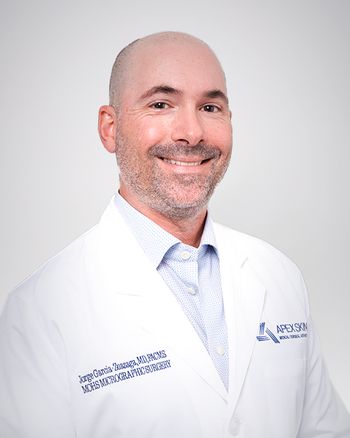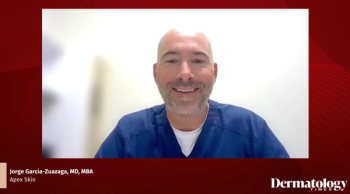
- Dermatology Times, November 2018 (Vol. 39, No. 11)
- Volume 39
- Issue 11
Physician burnout not a 'thing'
Studies indicate physicians are fried, but a new review says it’s not as bad as it sounds.
Studies about physician burnout have not used consistent definitions of what is considered burnout nor similar assessment measures; therefore, prevalence estimates vary widely, according to a
“If you read the media and academic literature, many are citing spuriously
Nonetheless, Dr. Mata believes, like most others, that burnout is an important issue for physicians.
“However, burnout, unlike major depressive order, is not an illness,” he says.
The data-driven story
In this review, Dr. Mata, along with first author, Lisa S. Rotenstein, M.D., M.B.A., also of Brigham and Women’s Hospital and several others, synthesized data from 182 studies involving 109,628 physicians in 45 countries published between 1991 and 2018.
Of the 182 studies, the authors noted at least 142 different definitions for what constituted “burnout,” and they noted that overall burnout prevalence among the studies ranged from 0% to 80.5%.
The strictest criteria to define burnout used by a subset of studies included in Rotenstein and Mata's systematic review required individuals to have an emotional exhaustion level of over 27 (on a scale of 0 to 54), a depersonalization level of over 10 (on a scale of 0 to 30), and a personal accomplishment level of less than 33 (on a scale of 0 to 48) on the Maslach Burnout Inventory (MBI). These criteria resulted in only about 5% of doctors as having burnout.
Conversely, the loosest criteria to define burnout used by another subset of studies considered individuals to be burnt out if they surpassed a minimal score on either the exhaustion or the depersonalization subscale of the MBI, translating into spuriously high burnout prevalence estimates of 50% or even greater.
Ranges for the prevalence of emotional exhaustion, depersonalization, and low personal accomplishment varied from 0% to 86.2%, 0% to 89.9%, and 0% to 87.1%, respectively, they wrote.
Dr. Mata says there are no agreed-upon criteria for labeling someone experiencing burnout. “Because of that, it is very difficult, if not impossible, to say how many people have burnout,” Dr. Mata tells Dermatology Times. “Researchers need to take a step back and think about the important methodologic issues that surround the measurement and definition of burnout, before they state how prevalent the condition is.”
Occupational stress vs depression
Dr. Mata says feelings of burnout are certainly something a lot of physicians experience.
“Feeling emotionally drained from your work once a week or once a month could simply be attributed to having a bad day at work,” Dr. Mata says. “It does not mean you have a syndrome. Everyone experiences emotional drain from work to some extent, particularly people who work very hard.”
Dr. Mata was principal investigator of two previous reviews on physician depressive symptoms in JAMA in 2016 and 2015, respectively.2,3 The 2016 study found that approximately 20% of medical students screened positive for depression when assessed with high-specificity inventories, that only 15% of depressed students sought psychiatric treatment, and that 11% of students reported suicidal ideation. The 2015 study also showed that roughly 20% of resident physicians screened positive for depression when assessed with high-specificity inventories.
“The goal of the current study and these two past studies is, in part, to measure the response of physicians to exposure to chronic occupational stressors,” Dr. Mata says.
Occupational stressors encompass everything from working very long hours to being exposed to extremely ill or dying patients in an emotionally fraught situation. For younger physicians and medical students, in particular, having a substantial amount of debt and/or not having money can also cause stress.
Resident physicians also may work up to 80 hours a week, in which case there is not much time for self-care and spending time with friends and family, again factors that can lead to stress.
“Burnout is often cited as being secondary to bureaucratic tasks at the hospital,” Dr. Mata says. “Doctors are spending less time than ever at the patient’s bedside and more time on computer-related tasks.”
But the downside of using depression rather than burnout as an outcome, according to Dr. Mata, is that the doctor’s emotional response to his or her job becomes pathologized by considering it within the framework of depression.
“The nice thing about burnout is that it is not the doctor’s fault that they are burned out, but rather it is due to the environmental and cultural factors at their workplace,” he says.
What the data means
“Solutions need to be coming from hospital administrators to correct the structural problems in the workplace that are affecting doctors. But before getting carried away with solutions and 'treatments,' a better understanding of how to define and measure burnout is badly needed,” he says.
In an
In addition, the study authors are unable to make conclusions about the prevalence of burnout or its effects, according to the editorial writers, because of excess heterogeneity in the study design and the methods used to measure burnout across a host of cultures and health systems.
The editorial writers also point out that the MBI was originally intended to assess burnout in the social service professions from the stress of caring for clients, which may not be applicable for evaluating physicians.
Rotenstein et al write that their review calls into question whether prevalence estimates can be meaningfully interpreted. In addition, they note the necessity of developing a consistent definition and improved assessment tools for burnout.
DISCLOSURES
Dr. Mata reports no relevant financial disclosures.
REFERENCE
Rotenstein LS, Torre M, Ramos MA, et al. “Prevalence of Burnout Among Physicians: A Systematic Review,” JAMA. 2018;320(11):1131-1150. DOI:10.1001/jama.2018.12777.
Rotenstein LS, Ramos MA, Torre M, et al. “Prevalence of Depression, Depressive Symptoms, and Suicidal Ideation Among Medical Students: A Systematic Review and Meta-Analysis,” JAMA. 2016;316(21):2214-2236. DOI:10.1001/jama.2016.17324.
Mata DA, Ramos MA, Torre M, Bansal N, et al. “Prevalence of Depression and Depressive Symptoms Among Medical Students: A Systematic Review and Meta-Analysis,” JAMA. 2015;314(22):2373-2383. DOI:10.1001/jama.2015.15845.
Articles in this issue
about 7 years ago
Low-dose bleomycin injections result in curious side effectabout 7 years ago
7 Safety recommendations for tattoo removalabout 7 years ago
Being older helps skin heal with less scarringabout 7 years ago
A guide to wound careabout 7 years ago
Topical sirolimus shows positive results in two studiesabout 7 years ago
Wound healing in psoriasis, multiple sclerosisabout 7 years ago
Classifying diabetic foot ulcersabout 7 years ago
Role of protease targets in wound healing uncertainabout 7 years ago
Allograft Tissue Research Grant program taking applicantsabout 7 years ago
Verrica develops a solution for common wartsNewsletter
Like what you’re reading? Subscribe to Dermatology Times for weekly updates on therapies, innovations, and real-world practice tips.
















